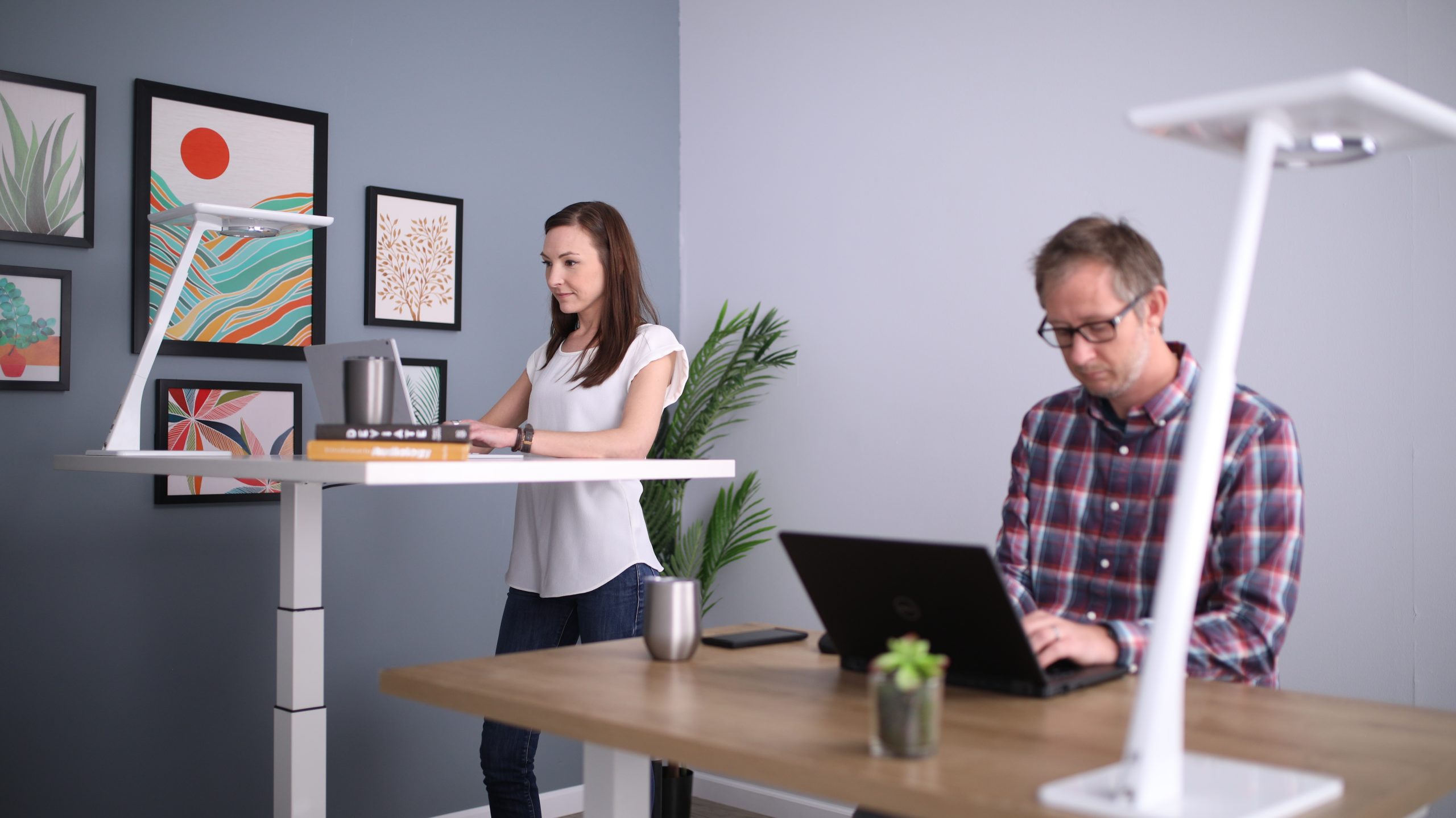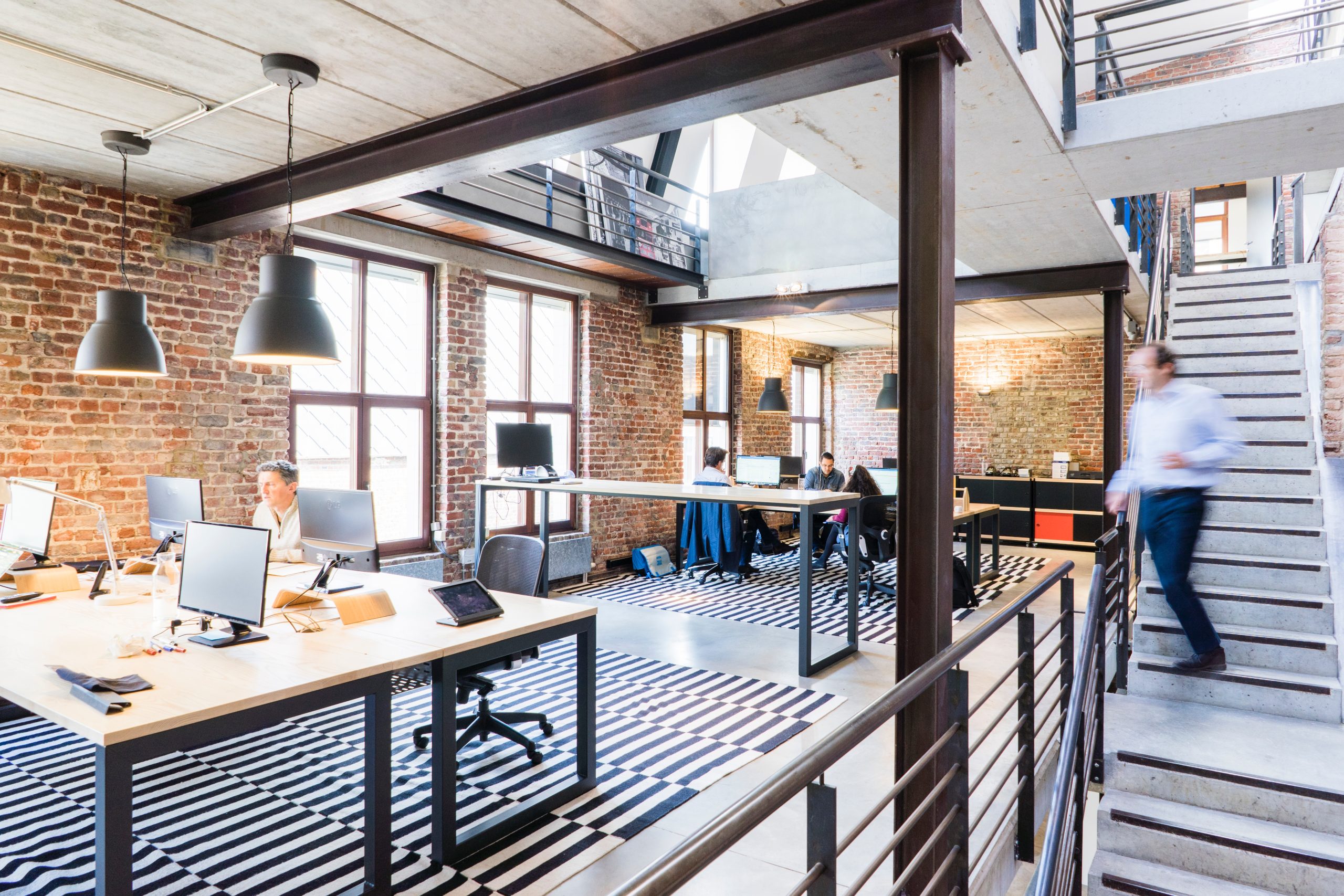Workplaces have changed significantly recently. In 2020, the COVID-19 pandemic led many companies to send their employees home until governments deemed it was safe to return. Some thought remote work was only a temporary solution, but the last three years have shown telework is here to stay.
Remote work has become increasingly popular and companies are finding ways to incorporate it into their operations. Some businesses have elected for hybrid models to get the best of both worlds. Learn more about the features commercial spaces are adapting to support hybrid workers.
What Did Office Design Look Like Before the Pandemic?
The pandemic changed many parts of our lives but none more so than the workplace. Before 2020, people sat closer together and worried less about transmitting diseases. In the 2010s, millennials began to enter managerial and executive positions, leading to a more modern approach to office design.
For example, companies began instituting bean bag chairs and sleeping pods at work. These two features symbolize the rise of health and wellness for your body and the environment. The 2020s have seen an increased focus on health and sustainability as a pandemic and climate change are two of the most significant worries for people. This decade has also brought something many wouldn’t have expected 10 years ago — hybrid working models.
How Do Hybrid Models Benefit Employees?
Hybrid models present an excellent middle ground for those wanting time at home but also needing time in the office. Flexibility is a priority for many job seekers in today’s economy. In fact, a McKinsey study reveals 87% of workers accept opportunities to work in a flexible format. This format is popular because employees have more autonomy over their schedule, workstations and daily workflow.
A 2022 Gallup survey explores the benefits of hybrid work as it rises in the U.S. and worldwide. Among the 8,000 respondents, 71% say work-life balance is the top advantage of hybrid models. Hybrid models work well for employees who want to spend more time with their families but also perform quality hours in the office with their colleagues.
Hybrid models also lead to less burnout for 58% of workers. Burnout and fatigue are common issues among Americans. A Deloitte survey finds that 77% of U.S. employees have experienced burnout with their current employer. Hybrid spaces can help your employees stay in their position and thrive as they spend less time stressed.
How Are Commercial Spaces Adapting to Hybrid Work?
Hybrid work has become a popular strategy for companies that want workers to have a place in the office as well as the flexibility to work remotely. This workplace situation will outlast the pandemic—research shows 74% of American companies either have or plan to implement a permanent hybrid work model.
The hybrid models allow greater flexibility for office managers, their teams and their families. On some days, they’ll get peak social interaction in the office, and on other days they’ll spend less time commuting to get more time with their families.
Workplaces calling their workers back, whether full-time or hybrid, need to be more progressive in how they view the office. Employees expect their office spaces to work for them and encourage productivity. Otherwise, they’ll begin to look for work elsewhere. Nearly 90% of workers who left their job in 2021 did so because they felt burnt out.
What Is Resimercial Design?
One way hybrid spaces are helping their workers is with resimercial design — a combination of residential and commercial features. Offices use it to improve the layout of their workspaces, giving workers comfort in the office. Instead of feeling like they’re at work, employees feel like they’re in a cozier spot where they can work among their colleagues. Some workers want to feel like they have a home away from home.
Resimercial design allows offices plenty of flexibility so office managers can create a comfortable and productive layout for their team members and clients. In a resimercial office, you may see couches and bean bag chairs to provide comfortable seating. Instead of typical bright light fixtures, some offices opt for ambient lighting to create a warmer and more intimate atmosphere.
How Are Companies Appealing to Hybrid Tenants?
Transitioning workers back to the office is an excellent time for an organization to review its workspaces. Hybrid working is the new normal, which means office managers must upgrade to retain their current employees and attract new talent. These features demonstrate how modern companies are attracting hybrid workers for today’s world.
Proximity to Transportation
Census data show the average American spends nearly an hour traveling to and from work every day. In densely populated areas, the commute can increase if workers take public transportation. For example, the average commute by bus takes over 45 minutes each way. Workers enjoy remote work because it reduces the need to commute.
Hybrid models located close to public or private transport hubs can eliminate lengthy commutes to draw employees to the office. An office space close to a bus stop or a metro line reduces stress on your workers. In addition to transportation, you should consider proximity to other establishments, like shopping centers, restaurants and coffee shops. This convenience helps employees and clients easily find your office and enjoy coming to work.
Meeting Rooms
In a hybrid setting, one of the primary reasons employees come to the office is for meetings. These sessions are much easier to conduct when most people are in person and don’t have to worry about technological problems. However, a hybrid situation may allow some workers to be at the meeting remotely.
You can significantly help your modern hybrid workspace by fitting conference rooms with adequate equipment to maximize engagement and productivity. A recent study shows that companies will conduct more meetings in a hybrid way, but only one-third have upgraded their video technology since the pandemic began. You can improve meeting quality by investing in video conferencing software that allows virtual whiteboards, transcriptions and captions.
Collaborative Working Spaces

Another advantage of hybrid work models is collaboration. Employees are often more creative when directly interacting with their office coworkers. Your office can encourage collaboration by incorporating creative spaces in the workplace where people can gather productively.
Collaboration sparks the imagination, and it’s a way for workplaces to get the most out of their employees. Office managers in a commercial space should invest in technology like smartboards, Bluetooth devices and wireless gadgets to empower their workers.
In addition to a creative space, your office should include a focus space. These areas allow employees to block out all noise and focus on their work.
Some employees work remotely but still want the feel of working in an office. Their companies may allow them to work in a co-working space. These facilities are rising with remote workers who want to remain productive. Experts project co-working offices will rise to over 40,000 facilities by 2024.
ADA Compliance
Accessibility to the office is critical for hybrid employees. Many workplaces hired employees in 2020 when they went remote. After a few years at home, organizations are calling their workers back. When designing an office space for hybrid workers, account for any current or future employees with a disability entering the workplace for the first time.
Creating a workplace friendly to people with disabilities is required by the 1990 Americans With Disabilities Act (ADA). Show your workplace cares about inclusiveness and is willing to go the extra mile to make every employee feel comfortable. Leasing an office close to public transportation is an excellent start. Also, ensure wheelchairs can easily access every aspect of the office, such as the kitchen, desks, bathrooms and tables in the conference rooms.
Many companies nowadays have advanced their operations to become more inclusive. For example, the professional services company Accenture has added closed captions for its online videos and uses live captions for any streamed event it does. L’Oreal frequently appears on Disability:IN’s annual Disability Equality Index (DEI) because it prioritizes destigmatizing disabilities and embracing safe spaces for all employees.
Natural Light
Incorporating natural light is another way to implement resimercial design into your office. Seeing sunlight during work hours positively affects your workers’ mental health. Find ways to increase natural light through windows and mirrors and remove obstructions in the office. You can even change the color of your walls — use lighter colors to reflect light instead of dark colors that absorb it.
Increasing natural light tends to reduce stress and increase productivity and alertness. Natural light and air quality are two of the most essential qualities in a healthy work environment. In the survey, 67% of employees said they’re more productive when their workplaces create a healthy environment.
Ducera, an investment bank in New York City, changed its design to incorporate more light and build a more positive employee experience. Nowadays, you can see outside with 360-degree views around the building. Ted Moudis Associates designed the Ducera office and maximized height with a jade-tinted exposed ceiling. The office reflects light throughout and creates an uplifting atmosphere for employees and visiting clients.
Free Food
When employees work from home, they have full access to their kitchen and pantry to get snacks whenever they want. So one way to enhance the resimercial feeling of the office is to provide plentiful snacks and beverages. You could upgrade the kitchen and stock it daily with fresh fruit and whole-grain bread to support your employees’ health and energy levels.
Studies show that free food and drinks are a motivator in the workplace. Research from Hoppier shows that free food in the office increases employees’ happiness by 11%. One office necessity in the kitchen is coffee. Make colleagues happy by investing money in a quality coffee machine to make espressos, lattes and other drinks that will perk up their day.
Tech companies often provide food for their employees, and Google is one of the drivers of this movement. The tech giant offers free food all over its campuses, featuring healthy snacks and lunches like sushi, tacos, fresh fruit and salads. Google uses free food as a perk to attract talent and keep them in the office when they’re hungry. Free food makes happy workers, so consider these refreshments in your office.
Upgraded Chairs

Whether they’re in a home office or a commercial building, your employees need a place to sit. Their desk chairs will be their seat for much of the workday, so they deserve a comfortable place to support their body and maintain productivity throughout the day. Quality chairs will appeal to hybrid tenants and can go a long way in boosting employee morale.
In a hybrid office, you’ll want to consider different chairs for each space in your workplace. For example, you’ll likely need conference room chairs in the meeting rooms. These seats are small but functional for meetings with a large group. For your employees, consider getting ergonomic chairs. This chair has a design intended to keep employees comfortable yet productive all day with solid posture.
Ergonomic chairs benefit employees in numerous fields. Whatever your line of work, musculoskeletal pain can adversely affect your employees. A 2019 study examined how postural support chairs affected ear, nose and throat (ENT) clinicians. The researchers found decreased neck and back pain because they had better posture while looking into microscopes and performing other tasks.
Adjustable Desks

Sitting at a desk for long periods can adversely affect your employees’ health. A sedentary lifestyle increases the risk of heart disease, Type 2 diabetes and other cardiovascular problems. Working while seated is fine, but some workers prefer standing up. A desk with adjustable height may be what your employees need to suit their working preferences.
Adjustable desks are ideal for today’s hybrid workplace. Your workers can switch between sitting and standing throughout the day, depending on their energy levels. Studies have shown that a sit-and-stand workstation decreases chronic lower back pain for employees. When workers stand, they also feel more alert and engaged with their business.
Standing desks have become popular, especially at tech companies. For example, Facebook has incorporated them at many of its offices. They find that collaboration and productivity are much higher when employees can shift between standing and sitting. Apple is another proponent of standing desks. CEO Tim Cook says the desks are better for your lifestyle because standing keeps you active and lowers the risk of diseases.
Embracing the New Normal
Since the COVID-19 pandemic, norms of the American workplace have shifted dramatically — and they show no signs of reverting to old ways. Hybrid and remote work models have become mainstream even as the pandemic winds down.
Workers have become pickier about where they work, and modern workplaces must appeal to prospective employees who want perks like hybrid flexibility. Commercial spaces have adapted to the new normal and are using resimercial features to lure workers into their offices.
For more from Rose, you can follow her on Twitter or subscribe to Renovated’s newsletter.


 https://unsplash.com/@proxyclick
https://unsplash.com/@proxyclick



